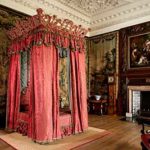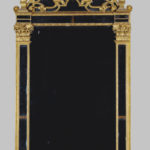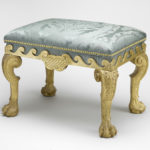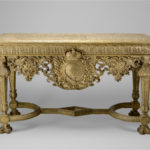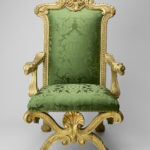Fit for a King: Furnishing Hampton Court Palace for George II and His Family
By Marie Pellissier, Omohundro Institute Apprentice, William & Mary
Welcome back to our Georgian Goodies blog series, where we highlight interesting, timely, or just plain nifty documents from the Georgian Papers Programme!
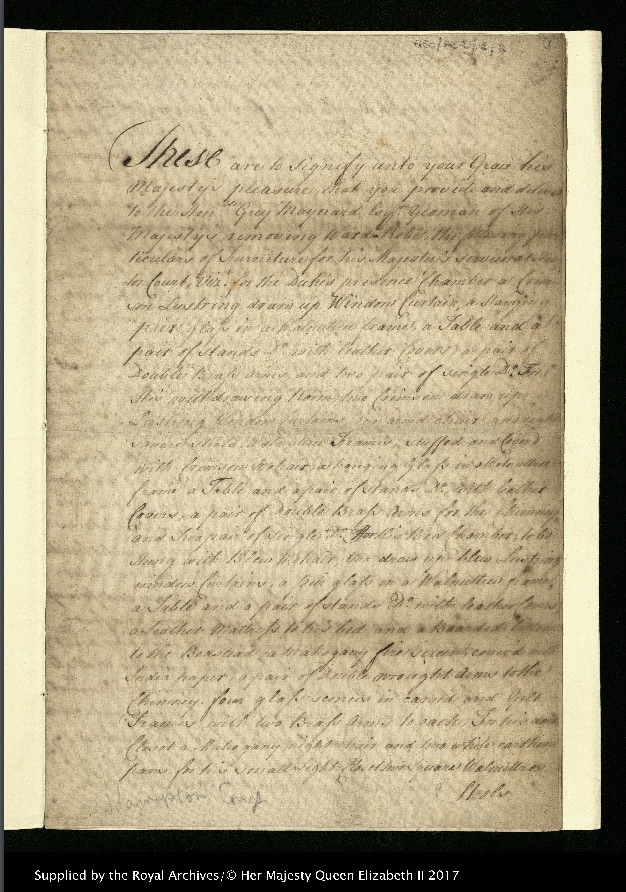
The first page of George II’s list of furniture to be purchased for the 1737 redecoration of Hampton Court, GEO/ADD/1/4.
On June 24, 1737, King George II signed a warrant authorizing the purchase of furniture for the royal apartments at Hampton Court Palace. This nine-page list (GEO/ADD/1/4) detailed furnishings for the palace–for rooms for the King and Queen, but also for their children and their courtiers, including Maids of Honor. Exploring this document allows us to visualize the world of the oft-maligned George II, and provides insight into the material reality of life at the court of George II.
Hampton Court Palace has a long history of renovations, as monarch after monarch sought to leave a personal touch on the building. It was originally constructed by Cardinal Wolsey, one of Henry VIII’s advisors. Wolsey gave the palace to Henry VIII in 1520, and it was that king’s favorite residence. In 1689, when William & Mary took the throne, they asked Sir Christopher Wren to redesign the palace. Instead of tearing down the Tudor-era part of the Palace, Wren added the Fountain Court, a beautiful Baroque palace, onto the older building. Queen Anne later called upon Wren to renovate the Royal Chapel.
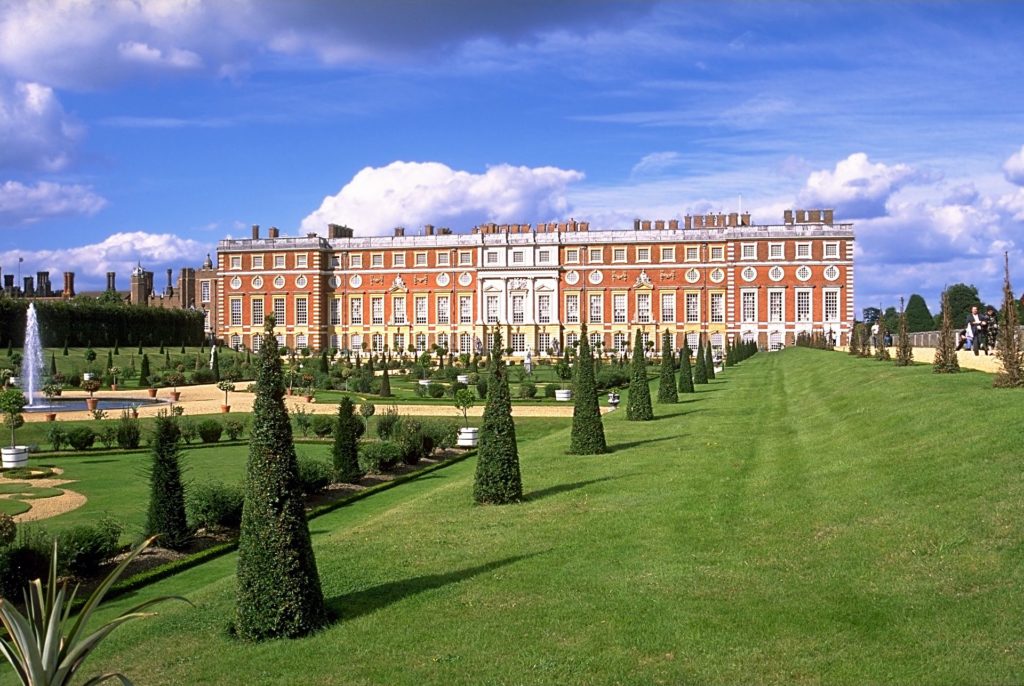
The south front of Hampton Court palace, designed by Christopher Wren for William & Mary. Photo courtesy of Andreas Tille, Wikimedia Commons.
During the reign of George I, rooms were added for George, Prince of Wales (later George II), and his wife Caroline. George II was the last monarch to live at Hampton Court Palace, and continued to refurbish the building well into his own reign. The 1737 warrant did not call for significant renovations of the rooms themselves, but rather for a complete redecoration of the royal rooms.
The rooms of Prince William, Duke of Cumberland (the third son of George II and Queen Caroline), received the most attention and were redecorated most lavishly. Curtains of crimson lustring (a type of heavy, glossy silk) adorned his presence chamber, while his bedchamber was decorated with “ two draw up blew Lustring window Curtains, a pier glass in a Walnuttree frame, a Table and a pair of stands Do. [ditto] with leather Covers, a Leather Mattress to his bed, and a boarded bottom to the Bedstead; a Mahogany fire screen, cover’d with India paper, a pair of Double wrought Arms to the Chimney. Four glass sconces in carved and Gilt Frames, with two Brass Arms to each.”
- 17th century tester bed at Holyrood House. Photo courtesy of the Royal Collection Trust.
- Bed for the Prince and Princess of Wales at Hampton Court, 1715. Photo courtesy of the Royal Collection Trust.
- Mirror for the drawing room of the Prince of Wales, c. 1715. Photo Courtesy of the Royal Collection Trust.
- Gilt wood stool from Hampton Court Palace, 1737. Image courtesy the Royal Collections Trust.
- Pier Table for George I, c. 1723. Photo courtesy of the Royal Collection Trust.
- Gilt and silk armchair for the Queen’s Withdrawing Room at Hampton Court, 1737. Photo courtesy of the Royal Collection Trust
Furniture made of mahogany was expensive and only for the most wealthy consumers. The mahogany tree is native to the Caribbean, and this dark, easy-to-carve wood quickly became popular among rich consumers after British merchants began importing it from Jamaica at the beginning of the eighteenth century. The Duke of Cumberland even had a mahogany “night chair,” or commode, with a “white earthen pan” to serve as a toilet bowl. Mahogany “night chairs” were also ordered for Princess Amelia and Princess Caroline, Princess Louisa and Princess Mary, and the Prince of Wales. Night chairs were a necessary convenience in a large palace, especially before the advent of indoor plumbing.
The redecorating project was not just for the rooms used by the royal family–and it was no small task! Thomas Dummer, the Clerk of the Great Wardrobe, estimated that the entire redecoration project would cost £6400, the equivalent of £1,412,770.98 in today’s money. In total, the Royal Household purchased:
- 505 chairs (of all shapes and sizes)
- 117 tables
- 35 beds
- 8 mattresses
- 71 sets of window treatments (curtains, valances, etc.)
- 8 mahogany “night chairs”
- 26 mirrors
- 56 sets of bedding

A side chair with a woven seat. Photo courtesy of the Winterthur Collection.
This furniture adorned other parts of the palace, not only the royal chambers. Chairs were ordered by the dozen, to stand in various drawing and dining rooms around the palace. Indeed, the majority of the chairs (294 of them, to be exact) were “matted chairs” like this one, made of beech, walnut, or other easy to find woods. These chairs would have been for the use of courtiers, visitors, and others who found themselves visiting Hampton Court, and needing a place to sit.
Despite its length (nine pages!) and level of detail, this list of furniture represents what is probably a relatively modest redecorating project at Hampton Court. It helps us visualize the world of George II and his sons and daughters–one of opulence and splendor, of the newest fashions in a palace that was already over two hundred years old. It also leads us to wonder how much the personal preferences of the royals are on display in this list. Was the Duke of Cumberland’s favorite color blue? We may never know for sure…

